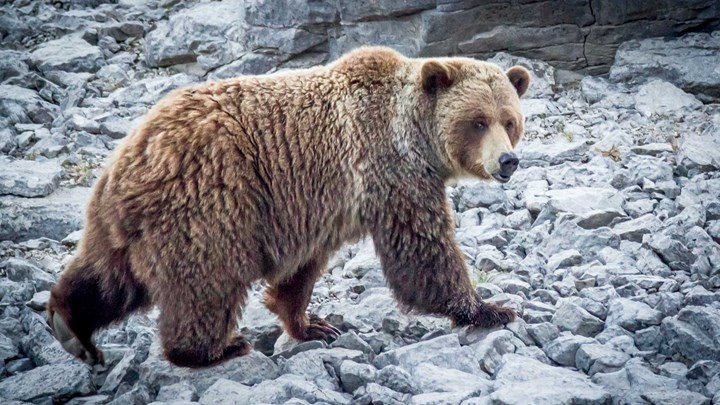
by Brian McCombie - Thursday, July 25, 2024

To read the commentary from various anti-hunting and pro-bear types, you would believe that the Canadian province of Alberta recently reinstituted a full-blown grizzly bear hunt. Not true. Maybe the loud but inaccurate cries of “Grizzly hunting is back!” are more of an attempt to hide the facts behind a recent order by Alberta’s Forestry and Parks Minister Todd Loewen to allow the culling of problem bears.
Ironically, the sound and fury over Loewen’s recent move are because these people got what they wanted: an end to the province’s grizzly bear hunt nearly 20 years ago.
The result? With no hunt, grizzly numbers have steadily climbed, leading to the current situation that sees an increasing number of bear-to-human conflicts that include livestock losses, public safety concerns and outright attacks on humans.
In June 2024, Loewen announced that his office could and would issue a “grizzly bear management authorization” for the purpose of killing a problem grizzly bear.
“This is an overall management strategy for problem wildlife, in particular, to make sure that we can respond to rural Albertans, both their concerns of safety but also loss of crop and loss of livestock,” Loewen told CBC News earlier this month.
According to CBC News, “The provincial government said there has been a rise in reports of ‘problematic’ and dangerous grizzly-human and grizzly-animal interactions. Some recent conflicts, the province suggests, have been predatory in nature.”
More and More Bears
Alberta ended its long-standing grizzly bear hunt in 2006 and listed the large predator as a “threatened” species in 2010. When the hunt ended, estimates put the grizzly population between 700 and 800 animals. Currently, Alberta calculates there are at least 1,150 grizzly bears roaming the province.
As a government of Alberta news release noted, there were three grizzly bear attacks on humans in 2020. In tracking the province’s ongoing encounters with bears, it explained, “2021 recorded a total of nine attacks by black and grizzly bears, contributing to a total of 104 attacks from 2000 to 2021.”
In 2023 and 2024, grizzly and black bears in Alberta killed some 120 head of livestock. The province’s Wildlife Predator Compensation Program paid out $153,649 for those livestock losses.
The new grizzly bear management option can only go into effect once a wildlife officer documents livestock kills, damage to private property or contact with a human resulting in injury or death by a grizzly. But the bear in question cannot be culled if it has a cub.
Facebook Fury
“I can't believe I'm writing this, but the controversial Alberta grizzly bear hunt is back on,” one Facebook post read soon after Loewen’s announcement. “A f**king THREATENED species is now about to be hunted again, thanks to a sneaky-as-f*** Minister…The changes mean that effective immediately, conflict bears in the province can now be shot by trophy hunters…. I'm absolutely enraged about this and will be writing A LOT more about it in the coming days…”
That post, and the author’s rage, were shared widely among Alberta anti-hunting groups. The Canadian Parks and Wilderness Society (CPAWS) had its concerns, too, as noted by CBC News, though the tone was much more moderate.
“If we’re going to be making these large changes to a management of species at risk, there should be more consultation,” said CPAWS Northern Alberta Chapter Director Tara Russell. “Introducing a hunt … to me and CPAWS, is wildly inappropriate. We shouldn't be applying hunting measures to a species at risk.”
Not a Hunt
Enraged Facebook posts to the contrary, the management option Loewen created is not a “hunt.” He noted that this wildlife management tool will create a pool of Alberta residents to act as “public wildlife management responders.”
Though any problem bear that is targeted will become the property of the hunter, as Loewen explained, “A hunt normally would allow the hunter to choose what, where and when they hunt. But the … problem wildlife responder will not have any choice of what, where and when they hunt. They'll be told exactly the details of all those.”
Could this change foreshadow an actual hunt? Maybe. But that is yet to be determined and would have to clear all sorts of legal and social hurdles to become a reality.
What is clear is that not hunting these apex predators has worked to increase their numbers. And with that increase comes what the anti-hunters should have expected: ever more conflicts between the big and often aggressive bears and people.
About the Author
Brian McCombie is a field editor for the NRA’s American Hunter and writes about firearms and gear for the NRA’s Shooting Illustrated. A member of the National Rifle Association and the National Shooting Sports Foundation, Brian enjoys hunting hogs, shooting 1911s, watching the Chicago Bears and relaxing with his two cats.
E-mail your comments/questions about this site to:
[email protected]
Proudly supported by The NRA Foundation and Friends of NRA fundraising.
